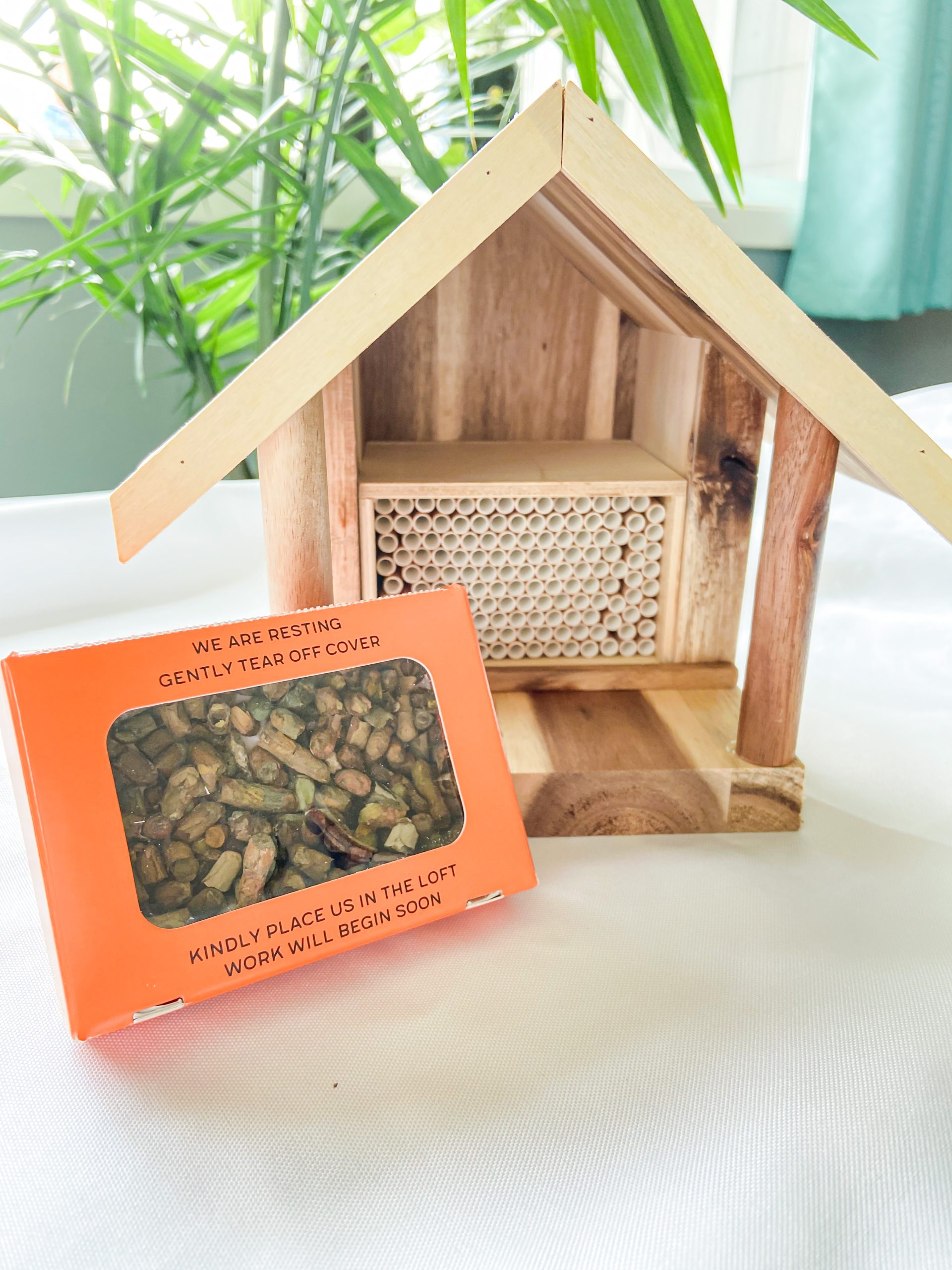Below, we will discuss everything you need to know about building a pollinator garden and how to source the correct perennials and annuals. Keep reading!
Plant Hardiness Zones
As most gardeners know, the USDA plant hardiness zones are more of a suggestion than a hard and fast rule. Many factors come into play with hardiness zones, like microclimates, soil conditions, local weather patterns, and so on.
Hardiness zones in the United States are more straightforward than the zoning in Canada, especially as the Canadian zones are due to be reevaluated this year. Talk to your local greenhouse if you need more clarification about your hardiness zone!
Keep those factors in mind when placing your pollinator house— make sure it gets lots of sun with good protection from the rain.
Plant Diversity
Plant diversity is a key player in attracting pollinators to your garden. Besides the leafcutter bee house for the garden, planting diverse and native crops will attract birds, butterflies, moths and other pollinating animals. The more pollinators that visit your garden, the better the cross-pollination!
Perfect Pollinator Plants
Throughout our years of experience caring for our leafcutter friends, Kind Bee Farms has noticed these bees are particularly drawn to yellow flowers with flat faces. Below is a list of some of their favourite flowering plants.
Favorite Flowers
- Marigolds, Cosmos, Petunias, Sunflowers and Zinnias – Annual flowers that grow well in zones 2-11.
- Geraniums – Perennials in zones 10-11; annuals in zones 3-9.
- Snapdragons – Annual or perennial flowers depending on the zone, typically grown in zones 6-10.
- Chamomile – Annual or perennial, depending on the variety, typically grown in zones 3-9.
- Alliums, Echinacea, Daisies, Dianthus – Perennials that grow well in zones 3-9.
- Delphiniums – Perennials that grow well in zones 3-8.
- Bee Balm and Clematis – Perennials that thrive in zones 4-9.
- Lavender – Perennials that thrive in zones 5-9.
- Hibiscus – Perennials that thrive in zones 5-10, depending on the variety.
- Angelonias – Typically annuals in zones 9-11, but can be grown as perennials in warmer regions.
Fruits & Veggies
- Blueberries – Perennials, typically grown in zones 3-7, with some varieties tolerant up to zone 9.
- Strawberries – Perennials, typically grown in zones 3-10 with specific varieties having narrower ranges.
- Apples – Typically perennials, with various varieties suited for zones 3-8.
- Raspberries – Perennials, with most varieties thriving in zones 4-8.
- Peas – Typically grown as annuals, suited for zones 3-10 depending on the variety and conditions.
- Tomatoes – Annuals, thriving in zones 3-10.
- Beans – Annuals, growing well in zones 3-10 as cool-season crops.
- Cucumbers – Annuals, thriving in zones 4-11 with optimal performance in zones 4-9.
- Peppers – Annuals, typically suitable for zones 4-11, with best growth in zones 5-10.
Avoid These Plants!
Leafcutter bees are pretty easygoing, but there are some plants they don’t want anything to do with; for example, they really dislike the fuzzy leaves of sage and licorice plants.
In our 30+ years of experience with these sweet little bees, we’ve noticed they don’t like large petaled blooms like lilies or hydrangeas, as they have a tough time getting the pollen!
Not sure if your garden is up to leafcutter bee standards? Don’t hesitate to send us an email at [email protected].
Ready to Plant a Pollinator’s Paradise?
The care and keeping of leafcutter bees is remarkably hands-off; you don’t need to be an expert beekeeper! They don’t ask for much, just a bountiful supply of blooming flower plants.
The right time to order a Kind Bee house for your garden is once everything is in bloom. We ship orders across Canada and the continental United States, and your bees will arrive within 5-7 days!
Interested in learning more about purchasing a bee house for your garden? Get in touch with us today!

